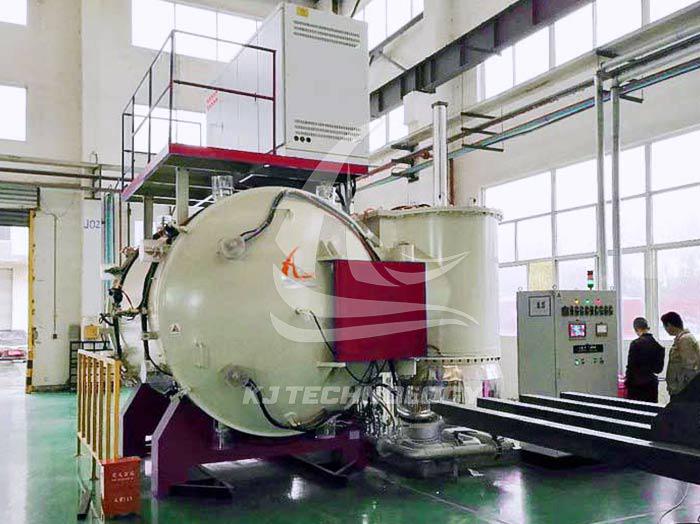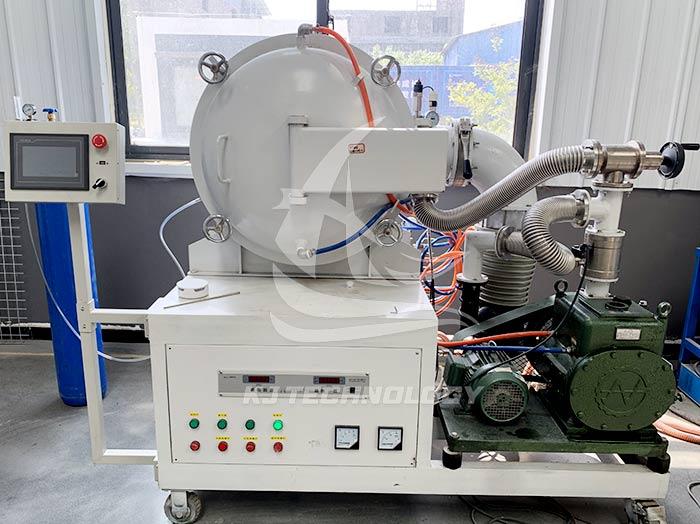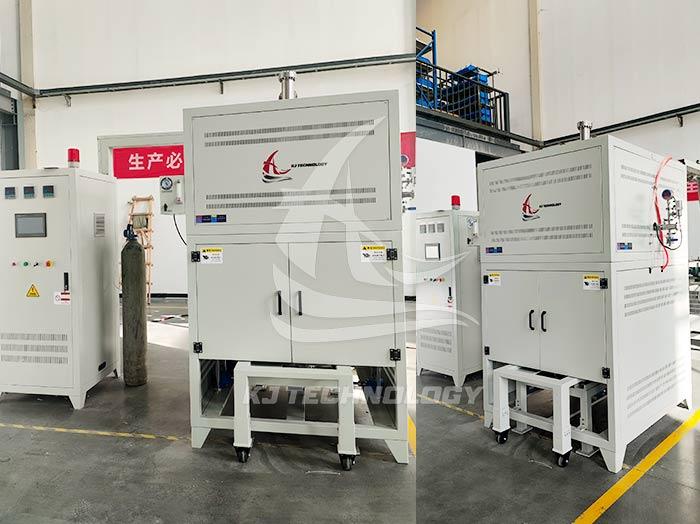Customized ceramic sintering vacuum furnace operating temperature
 08-28-2025 Author: KJ technology
08-28-2025 Author: KJ technology
The temperature range for customized ceramic sintering vacuum furnaces is usually between 1600 ℃ and 2400 ℃, and the specific upper temperature limit and temperature control accuracy vary depending on the equipment model and technical configuration. The following will explain the device type, temperature range, temperature control accuracy, and typical application scenarios:
1. Equipment type and temperature range
Universal high-temperature vacuum sintering furnace
Temperature range: 1600 ℃ -2200 ℃
Typical configuration: graphite heating element, multi-layer molybdenum screen insulation structure, mechanical pump+molecular pump vacuum system (with a maximum vacuum degree of 1 × 10 ⁻³ to 1 × 10 ⁻⁴ Pa).
Applicable scenarios: Conventional sintering of oxide ceramics such as alumina and zirconia, as well as precision machining of hard alloys and high-temperature alloys.
Ultra high temperature vacuum sintering furnace
Temperature range: 2200 ℃ -2400 ℃
Typical configuration: tungsten wire or rhenium tungsten alloy heating element, high-purity graphite furnace, dual calibration system of infrared thermometer and tungsten rhenium thermocouple.
Applicable scenarios: sintering of non oxide ceramics such as silicon carbide and silicon nitride, as well as optical grade preparation of transparent ceramics such as YAG and MgAl ₂ O₄.
Vacuum hot pressing sintering furnace
Temperature range: 2000 ℃ -2200 ℃ (pressure range 5-500 tons)
Typical configuration: graphite tube or molybdenum wire heating element, precision hydraulic pressurization system, 304 stainless steel or graphite insulation chamber.
Applicable scenarios: Preparation of ceramic matrix composites (C/SiC, SiC/SiC) that require simultaneous application of high temperature and pressure.
2. Temperature control accuracy and uniformity
Temperature control accuracy: ± 1 ℃ to ± 10 ℃, depending on the temperature measurement system configuration. For example:
Conventional monitoring using tungsten rhenium thermocouples below 1800 ℃;
Add infrared thermometers for non-contact calibration above 1800 ℃.
Temperature uniformity: ± 5 ℃ to ± 10 ℃, achieved through multi-layer molybdenum screen radiation insulation structure and stepped heating program.
3. Typical application scenarios and temperature requirements
Oxide ceramics (such as Al ₂ O3, ZrO ₂)
Sintering temperature: 1600 ℃ -1800 ℃
Requirement: To avoid the reaction of alumina with moisture or impurities in the air at high temperatures, vacuum environment can improve purity.
Nitride ceramics (such as Si ∝ N ₄ AlN)
Sintering temperature: 1700 ℃ -2000 ℃
Requirement: Sintering under nitrogen atmosphere to prevent the decomposition of silicon nitride, while promoting densification by adding yttrium oxide (Y ₂ O3).
Carbide ceramics (such as SiC, WC)
Sintering temperature: 1900 ℃ -2400 ℃
Requirement: Sintering under argon atmosphere to prevent oxidation of silicon carbide and suppress abnormal grain growth by adding boron carbide (B ₄ C).
Transparent ceramics (such as YAG, MgAl ₂ O ₄)
Sintering temperature: 2000 ℃ -2300 ℃
Requirement: Sintering under ultra-high vacuum (≤ 10 ⁻⁴ Pa) to eliminate pores and impurities and achieve optical grade transparency.
4. Equipment selection suggestions
Temperature upper limit: Depending on the melting point of the material, it is usually 0.7-0.9 times the melting point. For example:
Silicon carbide (melting point 2730 ℃) requires a furnace temperature of 2200 ℃ or above;
Aluminum oxide (melting point 2072 ℃) requires a furnace temperature of around 1800 ℃.
Temperature control accuracy: For transparent ceramics or functional ceramics, priority should be given to selecting ± 1 ℃ temperature control equipment; For structural ceramics, ± 5 ℃ is sufficient to meet the requirements.
Vacuum degree: For easily oxidizable materials (such as aluminum nitride), equipment with a maximum vacuum degree of 1 × 10 ⁻⁴ Pa is required; For ordinary oxide ceramics, 1 × 10 ⁻ ³ Pa is sufficient.








